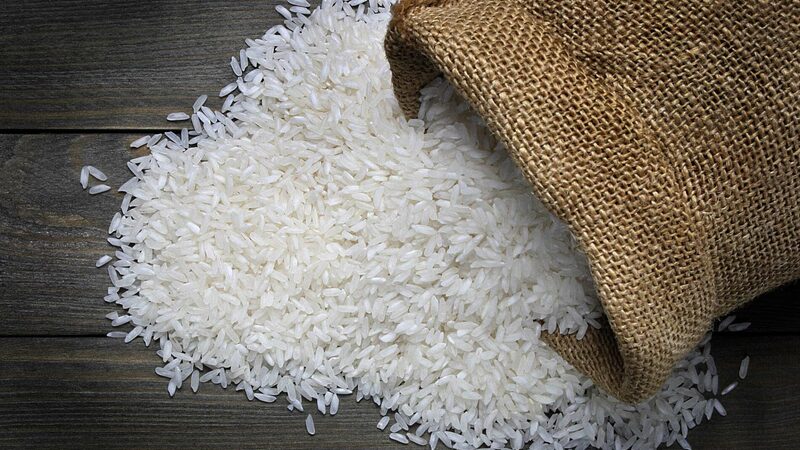Is Rice Healthy? Unveiling the Truth & Wise Choices
The health effects of rice, a staple diet for billions of people globally, have long been discussed. We explore the subject, “Is rice healthy?” in this article. By analyzing its nutritional makeup, advantages, and possible drawbacks, we hope to shed light on how it fits into a balanced diet. Come along as we explore the science behind rice eating and how it affects general health.
Understanding the Health Benefits of Rice Consumption
Rice is a great complement to a balanced diet because of its many health advantages. Here are some more reasons why rice might be seen as a healthful option?
Rich in Nutrients:
Essential elements included in rice include protein, healthy carbs, and certain B vitamins including niacin and thiamine. These nutrients are essential for metabolism, the synthesis of energy, and general health.
Low in Fat:
Rice is naturally low in fat, especially saturated fat, in contrast to many other staple meals. This makes it a great choice for anyone who wants to cut back on fat or keep their weight in check.
Gluten-Free:
Rice is a safe and adaptable substitute for gluten-containing grains for people with celiac disease or gluten intolerance. It lets individuals eat a range of foods without being concerned about negative reactions.
Healthy Rice Provides Energy:
Rice is a major source of carbs, which gives you an immediate and long-lasting energy boost. Rice can assist in maintaining energy levels throughout the day, whether it’s for people who need a mid-day pick-me-up or athletes fueling up before a workout.
Promotes Heart Health:
Rich in fiber, certain types of rice—like brown rice—can help lower cholesterol and lower the risk of heart disease. Furthermore, rice contains antioxidants, which may have heart health benefits.
Exploring the Potential Health Concerns Associated with Rice
While eating rice has nutritional advantages, there are also significant health concerns to be aware of:
Arsenic Contamination:
Arsenic is a naturally occurring element that can be harmful to your health if you eat rice frequently.
Impact on Blood Sugar:
White rice and other high-glycemic rice variants can cause sharp rises in blood sugar, which may be harmful to people who have diabetes or insulin resistance.
Weight Management:
Because refined rice variants have a reduced fiber content and can be overindulged in, consuming too much of them might lead to weight gain.
Gluten Sensitivity:
For those who have celiac disease or gluten sensitivity, there may be dangers associated with cross-contamination or processed rice products.
Nutrient Deficiencies:
A diet high in rice has the potential to cause shortages in important elements found in other food categories, which could affect one’s overall nutritional condition.
Processed Healthy Rice Products:
A diet high in sodium or sugar may result from the addition of substances like sugar and salt to some processed rice products.
Role of Healthy Rice in a Balanced Diet

A balanced diet requires a variety of macro and micronutrients, which rice is a basic meal that delivers. It provides a substantial amount of carbs, which provide energy for both physical activity and internal processes. When paired with complementing protein sources, rice’s incomplete protein content can help increase total protein intake.
Rich in dietary fiber, whole grain variants like brown rice help maintain digestive health and increase feelings of fullness. Vitamins and minerals are also found in rice, with brown rice having higher quantities of B vitamins and minerals than processed varieties like white rice. A balanced diet that includes rice guarantees a varied nutritional intake and promotes general health and well-being.
Making Informed Choices: Selecting the Right Type of Rice for Health
Take into account the following aspects when selecting rice for maximum health:
Whole Grain vs. Refined:
Choose whole grain products, such as brown rice, that still have the fiber-rich bran and germ layers. Compared to refined options like white rice, these offer more nutrients and help with better digestion and blood sugar regulation.
Glycemic Index:
Choose rice that has a lower glycemic index to reduce blood sugar rises. When compared to short-grain white rice, basmati, jasmine, and converted rice often have lower GI levels.
Healthy Ricev Nutritional Profile:
To be sure you’re getting enough of the necessary nutrients, compare the nutritional values of several types of rice. Think about alternatives like red rice, black rice, or wild rice, each of which has a distinct flavor, texture, and antioxidant capacity.
Cultural Preferences:
When choosing rice kinds, take into account cultural culinary traditions as well as personal taste preferences. Discover a range of international options to infuse your meals with excitement and diversity while respecting cultural heritage.
Healthy Rice Cooking Methods:
Select cooking techniques, such as steaming, boiling, or pressure cooking, that maintain the nutritional value of rice. Rice should not be fried or deep-fried as this can add needless calories and bad fats.
Portion Control:
To limit calorie intake and prevent overindulging in rice, practice portion management. To make well-rounded meals, balance rice with other nutrient-rich foods and portion out serving sizes using measuring cups or scales.
Conclusion
In summary, rice is a staple grain that has advantages as well as possible drawbacks for your health. Because of its high nutrient profile, low-fat level, lack of gluten, and ability to provide energy, it is a beneficial complement to a diet that is balanced. However careful consumption is advised due to factors like processing differences, glycemic impact, and arsenic contamination.
Choosing whole grain kinds, keeping an eye on the glycemic index, and controlling meal sizes are crucial for maximizing rice’s nutritious benefits while reducing its associated hazards. People can appreciate rice’s culinary flexibility while boosting general health and well-being by making informed choices and adding it to a diverse and balanced diet.
You Can Read More About Rice
Amazing Creamy Rice: Secrets, Techniques, and Variations
Think You Know How to Make Mexican Fried Rice
Unlock the Power of High Protein Rice
